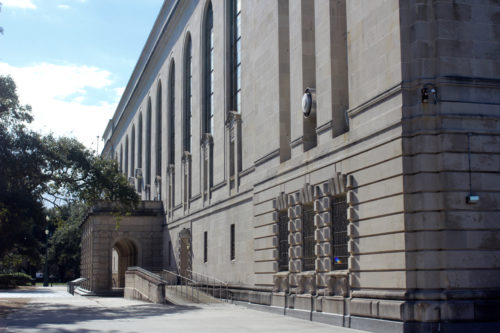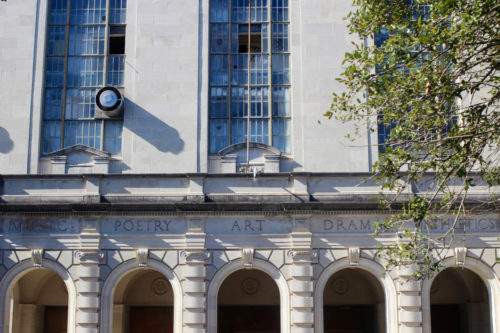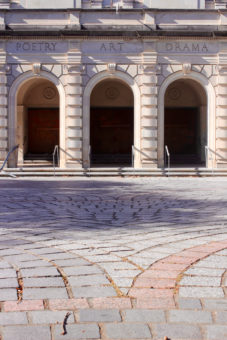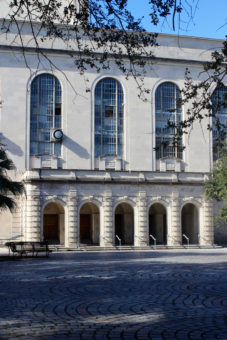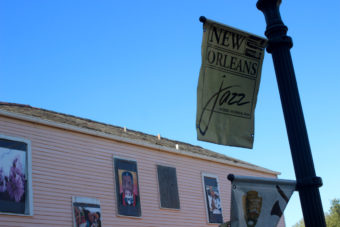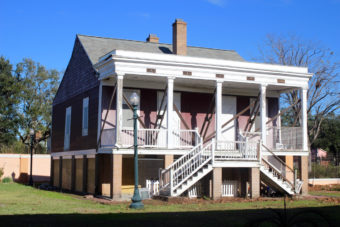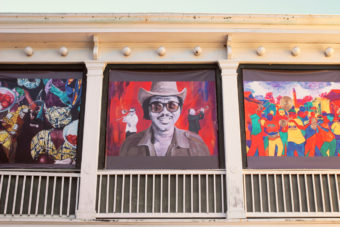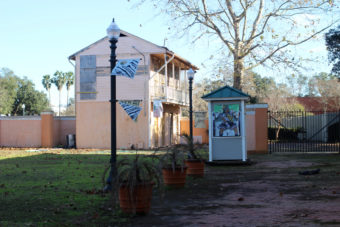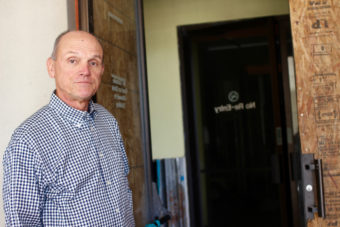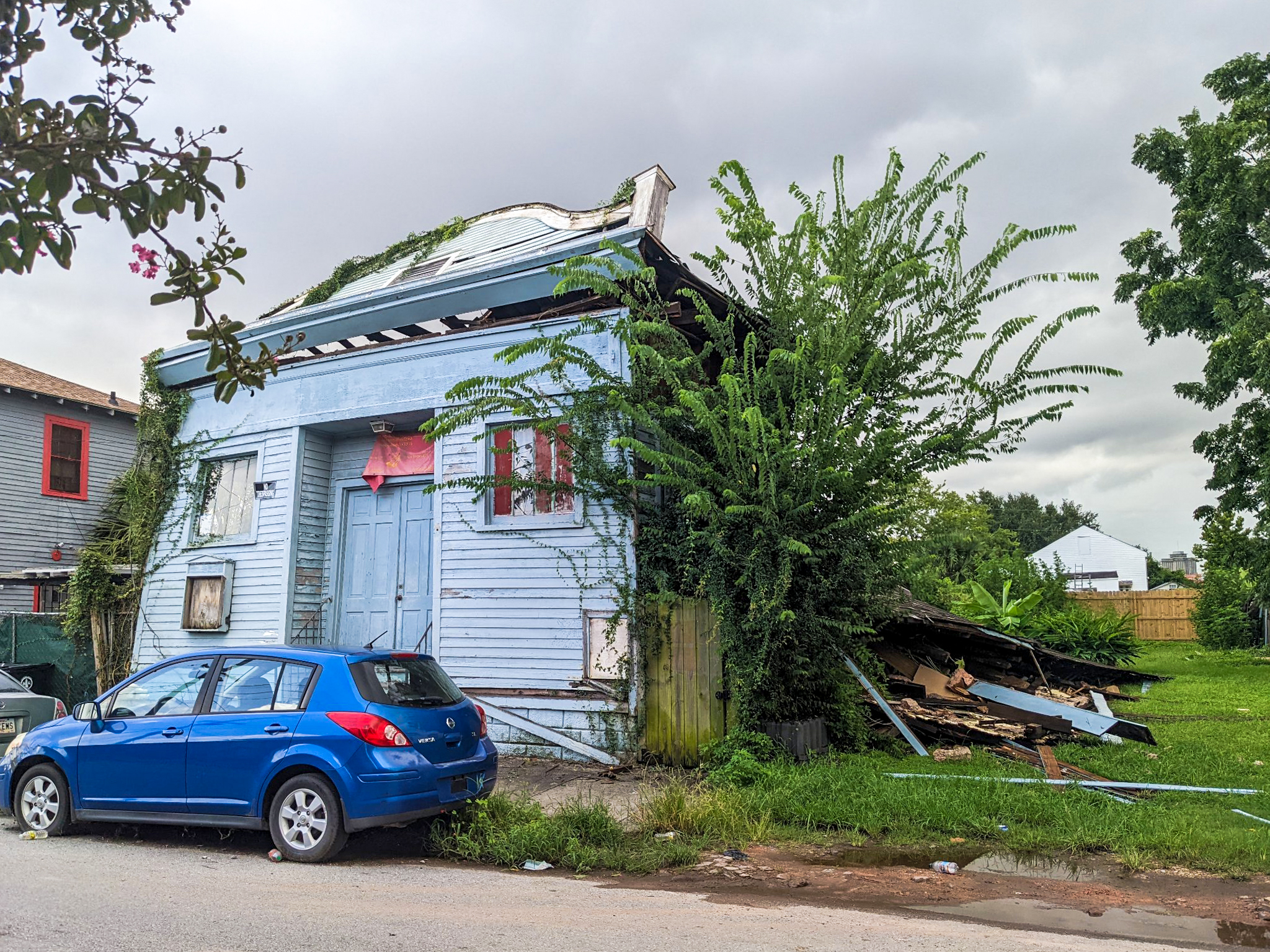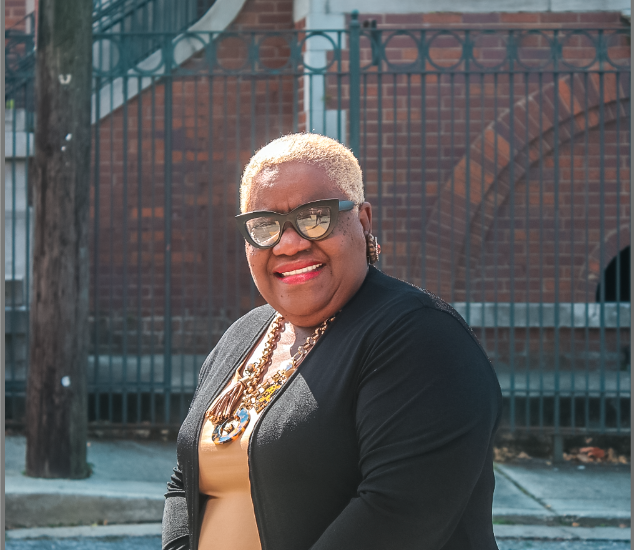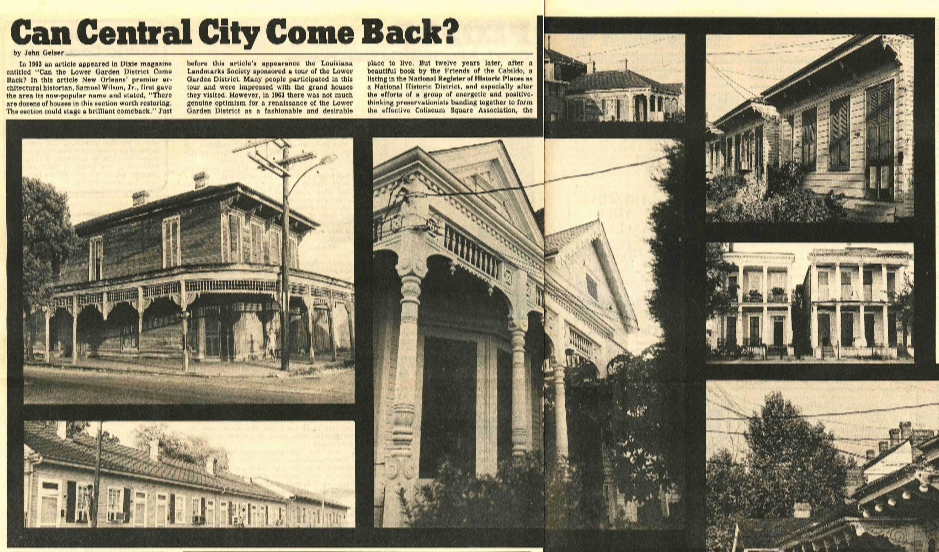It may officially be unoccupied, but New Orleans’ Municipal Auditorium is hardly quiet.
The circa 1930 building, a handsome structure with a storied past located inside of Tremé’s Armstrong Park, has sat vacant since Hurricane Katrina. But it still buzzes with activity — mostly the trespassing of daredevil teens, vandals, graffiti artists, drug users and the homeless.
Its deterioration has been a topic of community discussion for a decade, with Carnival krewes lamenting the loss of their favorite site to host balls, neighbors decrying its new “tenants,” and preservationists biting their nails as its windows are broken, its limestone is tagged with graffiti and evidence continues to surface of fires being started inside.
Mayor Mitch Landrieu said in a February 2017 press conference that the building was impossible to secure, but that arbitration with FEMA over the funds needed to restore the building — a.k.a. the reason of the building is currently sitting empty — should be complete by “the end of the year.” The City has claimed that arbitration and restoration were imminent several times in the recent past, and yet little has been done. What does fate hold for this once-grand structure?
The desire for the construction of a Municipal Auditorium in New Orleans was fueled partly by the national City Beautiful movement in the 1920s, coupled with the loss of the French Quarter landmark the French Opera House in 1919. City officials planned, with a budget of $2 million, a cultural center that would include a new auditorium, plaza, parkway, and more.
The building, an impressive five-story, Italian Renaissance-style limestone structure designed by Favrot and Livaudais, was completed in 1930. Elegant features included three prominent stone porch entrances, large arched window and door openings, and some dentil and band detailing. Heavy bronze doors punctuated entrances, and inside, marble floors, wood-paneled walls and plaster ceilings greeted visitors. The 75,000-square-foot auditorium could accommodate up to 10,000 seats; a set of dividing walls were also installed that could be lowered and raised to split the auditorium into two sections. A 35,000-square-foot exhibition space was added in 1931, allowing the building to also function as a convention center when desired. The Municipal Auditorium also contained myriad other smaller rooms to accommodate meetings and other functions
According to the WPA’s New Orleans City Guide, the Municipal Auditorium was “Modern in every aspect; it forms a striking contrast to its environs of old buildings and historic sites.” Al Jolson was the first act to perform in the theater, attracting 4,500 people for a concert on Jan. 30, 1930. On May 30 of that year, the auditorium was officially dedicated to WWI’s “Heroes who gave their all in Her defense and for Her Honor.”
Until Hurricane Katrina, the Municipal Auditorium was the premier site for Mardi Gras balls. By the 1970s, an average of 60 were held there per year. The Elves of Oberon was the first krewe to use the building for its ball in 1930. Rex began using the building in 1936, and later, other krewes joined, including Comus, Hermes, Choctaw, Mokana, Endymion, Okeanos and Alhambra.
The auditorium’s affect on Carnival traditions was profound. “It was a magnificent setting for Carnival balls,” said Errol Laborde, editor in chief of New Orleans Magazine and Rex historian. “There was large floor space so people could walk with gowns and trains, there was upper deck seating to sit above and watch, and there were big dressing areas where the men could have bands, and women had things like a champagne bar. Somebody has pointed out to me that if you look at Carnival gowns pre-1930, they have short trains. After that date they have elaborate, longer trains after because there was space for them at the Municipal Auditorium.”
For the Rex and Comus krewes, whose courts traditionally meet on the night of their annual ball, the location was perfect: the auditorium’s ballroom would be partitioned, with Rex’s ball on the larger side and Comus’ gala on the smaller side. When it was time for the courts to meet, they simply walked to the middle.
Outside of Carnival, the Municipal Auditorium played host to concerts, including Elvis Presley, Led Zeppelin, Rod Stewart and others. Graduations and school dances were held there, as were sporting events: the auditorium was home to the New Orleans Buccaneers basketball team from 1969 to 1970, as well as host to boxing and wrestling matches and other college and professional basketball games. Circuses were held there, and parties and galas of all kinds. It was a building where special events were hosted and memories made for many New Orleanians. An ice rink was installed in 1991 with the hope of attracting ice shows and a hockey team. Those plans were stalled for a few years when Harrah’s turned the auditorium into a casino in 1994, prohibiting other major uses inside the building. Two years later, after Harrah’s filed for bankruptcy, the casino shuttered. The contract stated that Harrah’s was responsible for restoring the auditorium, however, and so the building underwent a $39 million restoration that left it gleaming. It hosted the Eastern Coastal Hockey League team the New Orleans Brass from 1997-1999, and resumed use as a site for Mardi Gras balls until 2005.
The Municipal Auditorium suffered five feet of flooding after Hurricane Katrina; the basement, which held the building’s electrical and mechanical systems, was inundated, ruining the systems completely. The building was sealed and left to sit as the city waited for FEMA funding to repair the structure.
Eleven years later, it still sits. In 2010, FEMA offered the City $7 million for repairs that the City, at that time, estimated to cost $34 million. Thus the City rejected FEMA’s offer, saying it was too low. The City announced in 2014 that it had received $20 million from FEMA for stabilization work; a sump pump was installed to drain the basement, generators were installed and some asbestos abatement was completed.
Any more improvements to the building have been put on hold until more FEMA funding is received. In August 2016, WDSU reported that Cedric Grant, executive director of the city’s Sewerage and Water Board, said that arbitration had begun with FEMA, to be resolved within 90 days. But a recent statement from Erin Burns, press secretary for Mayor Mitch Landrieu, shows those efforts were fruitless. “Under the Mayor’s leadership,” she said, “the City went back to the drawing board and has since secured $41.7 million but that is not enough to fully repair the building, which we estimate to be more than $80 million” — more than twice the amount the City wanted seven years ago. “At this time, we have reached an impasse in our negotiations,” she said. The City and FEMA “will enter into an arbitration process so we may secure the necessary public assistance funding to cover all eligible repairs to damage caused by Katrina,” she added.
When this is scheduled to take place is unclear.
With each day that passes, the threat to the almost 90-year-old building grows. But it isn’t water or wires or mold that threatens the structure — though many claim the smell of mold is emanating so strongly from the building that they can smell it while walking past. The threat is people.
While touring the site a few weeks ago with Leo Watermeier, one-time City manager of Armstrong Park who lives nearby and still maintains some of the gardens within the park, another neighbor walking his two dogs stopped us to chat. “This summer, I saw about five 12-year-olds on the roof, and the next week I saw four teenagers breaking into the building,” he said. “I called the New Orleans Police Department and they said to call Parks and Parkways. So I did and they said, ‘Have you called the police?’”
Around the end of 2016, there were about 15 people living outside of the building, under its awnings and in doorways, according to Watermeier. An untold amount of people were also inside the structure. This is a regular occurrence, Watermeier said. “Periodically the police sweep them out, but they return.”
Though some of the entrances are barricaded, others stand open. While touring the site, Watermeier tried to open a door in the back of the building; it easily unlatched.
Things recently came to a boiling point when, this past New Year’s Eve, a woman who had broken into the building found herself stuck on an upper floor and called ‘911’ to be rescued. As multiple fire trucks pulled up to the front of the building, lights flashing, she smashed windows and threw objects while attempting to climb out. “I saw the lights and heard the sirens from my house and thought, ‘It has finally happened,’” Watermeier said. “I’m so afraid it’s going to burn down.”
Watermeier recently entered the building (with ease, through an open door) and toured it with a television reporter. He documented evidence of small fires started by trespassers, as well as vandalism galore.
Mayor Landrieu addressed the deteriorating state of the Municipal Auditorium in mid-February during a City press conference. When asked if the City could successfully barricade the structure, he said, “Evidently not at the moment, not all the way up and all the way to the bottom. We will continue to close it up and continue to make sure to ask people not to stay there.
“Every time we try to board it up, somebody else breaks in there,” he continued. “Absent ringing it with 100 police officers whose time could be better spent somewhere else,” he’s unaware of a solution to the problem.
Landrieu further commented, at the press conference, that “FEMA actually owes us about $90 million.” He said he doesn’t expect a resolution until “the end of the year.”
Mayor Landrieu minimized public concern for the Municipal Auditorium at the recent press conference, stating that, “There are one or two people in the French Quarter that are concerned about it and that keep talking about it.” But for a building that hosted so many momentous events for the majority of the past century, it’s hard to believe only a few people care about its fate.
“I love the building, and I’d love to see it restored,” Laborde said. But he’s realistic about the financial realities that might impede its redevelopment. “I’d love to see the building used for Carnival balls again, but I understand it would have to be more than that. Krewes and Carnival balls don’t financially justify restoring the building.”
Plus, while Carnival krewes lamented its loss for years after Katrina’s aftermath, at this point, most are used to no longer having the Municipal Auditorium as a venue, Laborde said. “Krewes kept wanting it to come back, as the building was perfect for balls,” Laborde said. “But it has taken so long that krewes are used to being somewhere else. There is no hotel ballroom remotely as good as the Municipal Auditorium — nowhere has the upper decks or ballroom space — but they’re good enough. Plus there are thing krewes like about hotels: they have restaurants and bars, and amenities that auditorium didn’t have.
“With each passing year, the Municipal Auditorium is becoming more of a memory,” Laborde said.
While the auditorium was once in high demand for a variety of uses throughout the year, many new and restored theaters and venues are now hosting the city’s sporting events and rock concerts and benefits: the Superdome, the Smoothie King Center, the Saenger Theater and the Mahalia Jackson Theater, to name a few.
Mayoral press secretary Burns said no future use or tenant has been decided for the building. “Upon the conclusion of the arbitration process, the City will conduct a market analysis to determine a best and final use for the facility,” she said. “Then, the City will propose a redevelopment strategy for the building to return it to commerce like we have done with St. Roch Market and the former World Trade Center Building/Four Seasons project.”
Restoration of the impressive building would be an incredible win for the city. Though it’s threatened, the stone structure is still intact and solid, and ripe for redevelopment. Its proximity to the French Quarter — it fronts a revitalized N. Rampart Street and is three blocks from tourist-packed Bourbon Street — makes it an ideal location for tourist spill-over from the overflowing Vieux Carré. Plus its location within culturally and historically rich Tremé, itself undergoing a renaissance, and its proximity to sites such as the Backstreet Cultural Museum and St. Augustine Church, make it a natural draw for foot traffic.
For now, the building sits.
-With research by Alex Barthel | Photos by Liz Jurey





